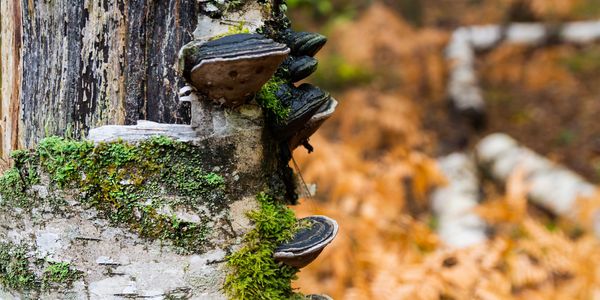About Phellinus Ignarius

Phellinus igniarius, commonly known as the "false tinder fungus," is a perennial mushroom found on the decayed wood of various trees. Traditionally recognized for its role in ecology, as it contributes to wood decay, this fungus is gaining attention in the realm of human health for its promising medicinal properties. In this blog, we'll explore the health benefits, bioactive compounds, and potential uses of Phellinus igniarius.

1. Traditional Uses of Phellinus igniarius
Historically, Phellinus igniarius has been employed in traditional medicine across various cultures. In some regions, it is utilized as an herbal remedy for ailments such as:
- Respiratory conditions
- Gastrointestinal issues
- Inflammatory diseases These traditional uses highlight the long-standing belief in its therapeutic potential.
2. Bioactive Compounds
Research into Phellinus igniarius has identified several bioactive compounds, including polysaccharides, triterpenoids, and phenolic compounds, that contribute to its health benefits:
- Polysaccharides: Known for their immune-boosting properties, these compounds may help enhance the body's defense mechanisms.
- Triterpenoids: Exhibit anti-inflammatory and antioxidant effects, possibly mitigating oxidative stress and inflammation in the body.
- Phenolic Compounds: These are linked to numerous health benefits, including anti-cancer and cardiovascular protective effects.
3. Evidence of Health Benefits
Several studies have investigated the health benefits of Phellinus igniarius, yielding encouraging results:
- Immune Support: Studies suggest that extracts from this fungus can stimulate immune responses, making it a potential ally in combating infections and diseases.
- Anti-Cancer Properties: Preliminary research indicates that compounds in Phellinus igniarius may inhibit the growth of cancer cells, particularly in breast and liver cancers.
- Antioxidant Activity: The antioxidant properties of this fungus can help protect cells from damage, which is crucial in preventing chronic diseases.

4. Ways to Use Phellinus igniarius
Phellinus igniarius can be consumed in various forms, including:
- Powdered Extracts: Typically used in health supplements, powders can be added to smoothies or meals.
- Teas: Brewed as a tea, this fungus can be a soothing and health-promoting beverage.
- Tinctures: Alcohol-based or glycerin tinctures can provide a concentrated dose of beneficial compounds.
5. Safety and Considerations
While Phellinus igniarius shows promise, it’s essential to approach its use with caution:
- Consult Healthcare Professionals: Before adding any new supplement, especially medicinal mushrooms, it’s important to consult with healthcare providers to ensure safety and avoid potential interactions with medications.
- Source Quality: Ensure that any products derived from Phellinus igniarius are obtained from reputable suppliers to avoid contamination or adulteration.
Conclusion:
Phellinus igniarius is more than just a decaying fungus; it holds potential as a health-promoting ally. With ongoing research and increasing interest in natural remedies, this mushroom could become a staple in holistic health practices. Embracing the wisdom of traditional medicine and modern science, Phellinus igniarius may pave the way for innovative approaches to health and wellness. As always, informed choices and professional guidance are key to harnessing its benefits safely.
Phellinus Igniarius
Copyright © 2025 Phellinus Igniarius - All Rights Reserved.